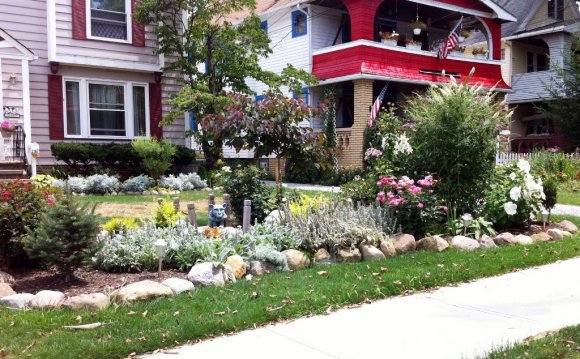
There are endless options for small front yard landscape design plans, no matter the style or size of your home.
Remember, your front yard is your calling card to the neighborhood. Not only is it the space that makes a first impression to your neighbors, but also it’s the place to express your taste and personality. When choosing complementary plants and designs, keep the architectural style of your home in mind so that your small front yard represents the spirit of its traditional or contemporary style.
Small front yard landscapes are all about proportion. Think of your small front yard as the collar and your home as the shirt. If plants or trees are too tall, they can overwhelm the front of your home. The landscape and hardscape should match the scale of the house – and complement its façade. Ornamental trees such as cypress can be used to "mask" or hide parts of the front of your home you want hidden or create a privacy wall. Cutting a large tree from the front of your yard might diminish shade but also reveal and enhance your home’s character and style.
When it comes to flowering plants, there’s no limit to the amount of color you can use in your front yard. If you have a center walkway that leads to your front door, line the sides of the path with bright orange anemones or periwinkle blue bell flowers. Instead of planting hedges next to the house, a stand of Black-Eyed Susans makes a vibrant statement.
Small front yards can have beautiful, well-trimmed lawns if they’re maintained properly. Yet, don’t feel like you must have grass in your small front yard. An unkempt front yard with a lawn that is poorly cared for can quickly become an ugly sight to you and your neighbors. If you’re considering exchanging your lawn for a stone courtyard or wide walkway, fill borders and remaining areas with mulched beds of your favorite annuals such as snapdragons or African daisies. Pea gravel or pebbles make an easy groundcover for tiny front yards. Line the ground with a weed-resistant mesh before applying the gravel, and remember to treat moss growth and mildew promptly.















